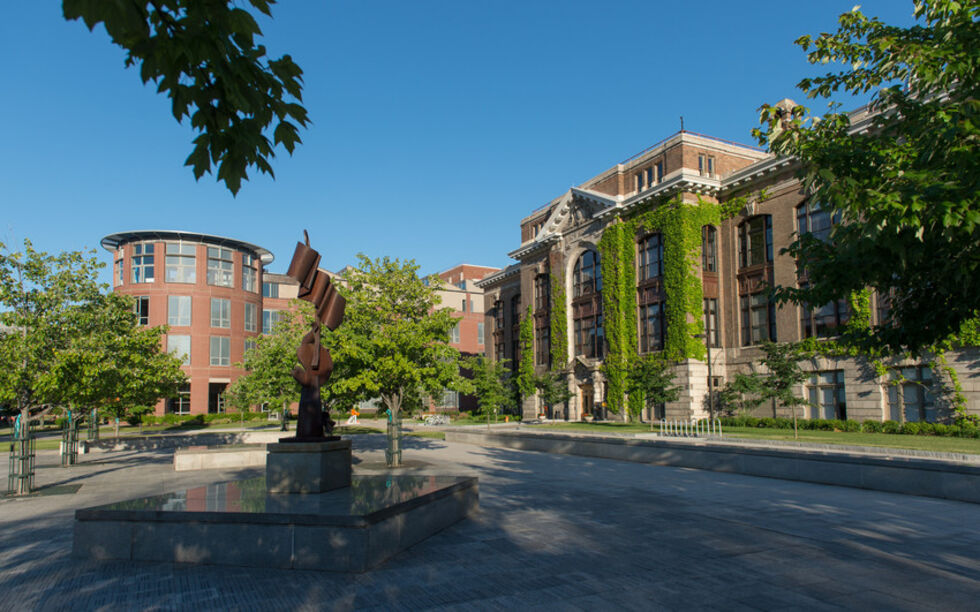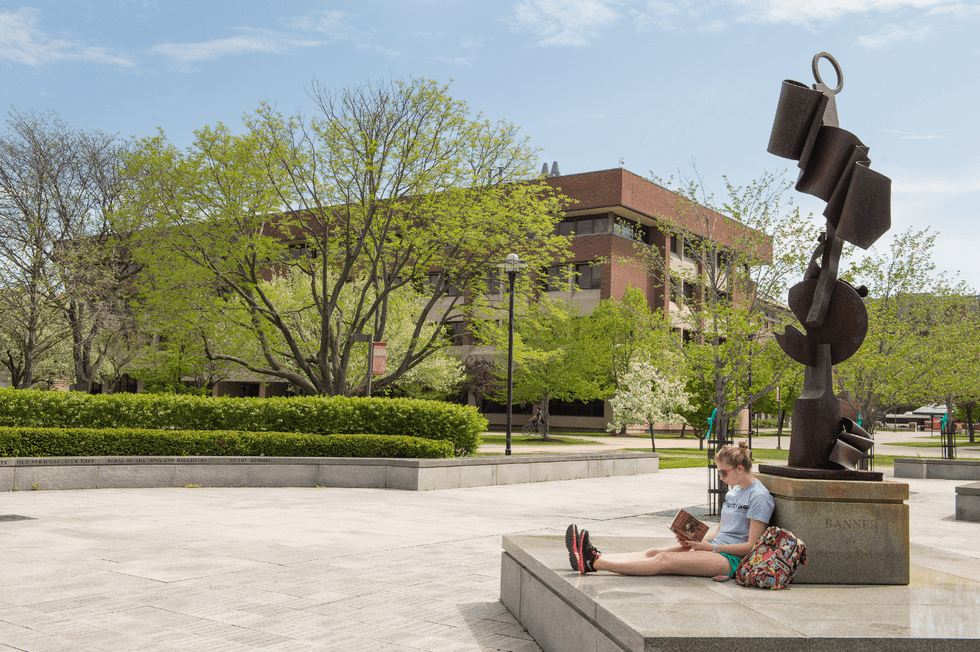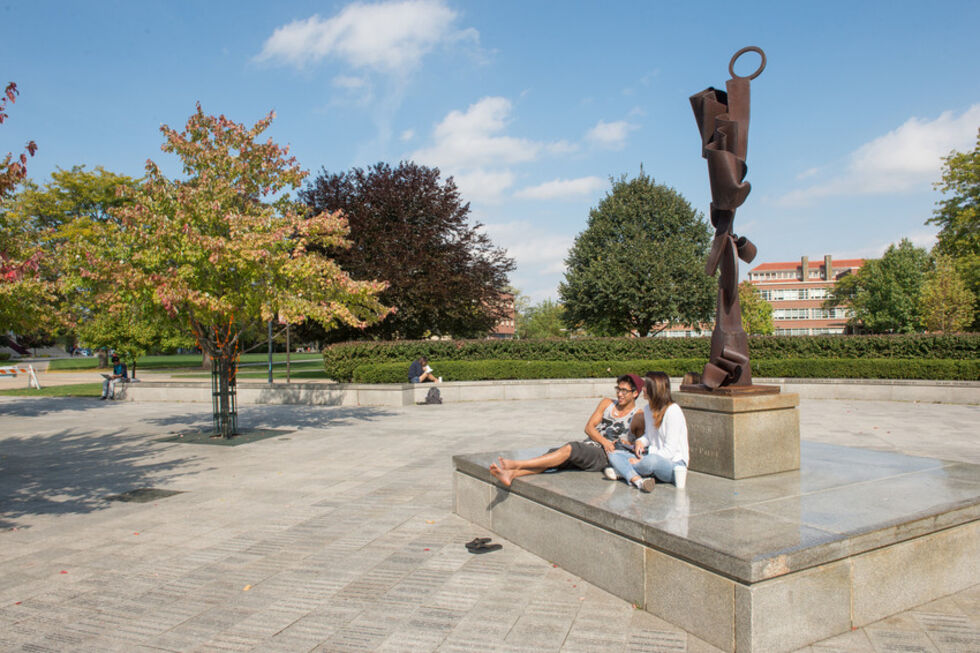Banner Sculpture
"Banner" by Albert Paley , 1999
The Banner sculpture is a metal and steel sculpture created by American artist Albert Paley, made through forging the metals to create an architectural sculpture. The sculpture was purchased by the Alumni Orange Grove fund during the $20,000 Orange Grove sculpture contest and can be found in front of Bowne Hall. Paley’s artwork is distinctive for its combination of industrial materials, large scale, implied movement, organic form, and beauty. Albert Paley is the first metal sculptor to receive the coveted Institute Honors awarded by the American Institute of Architects, which is the AIA’s highest award for a non-architect. Paley’s works can be found in the permanent collections of many major museums, including the Metropolitan Museum of Art in New York, the Museum of Fine Arts in Boston, the Museum of Fine Arts in Houston, and the Victoria and Albert Museum in London.
Albert Paley was not always an artist, but a jeweler and furniture craftsman by trade before progressing into architectural sculptures. Paley’s works have been commissioned by both public and private institutions and corporations, and he has completed more than 50 pieces that are site-specific. Notable site-specific works include: the Portal Gates for the Renwick Gallery of the Smithsonian Institution in Washington, D.C.; the Portal Gates for the New York State Senate Chambers in Albany; Sentinel, a monumental plaza sculpture for Rochester Institute of Technology; and a sculpture for the entry court of Bausch and Lomb’s headquarters in Rochester, NY standing 65 feet tall. Some of the visual factors that unite all his works — large or small, gold or iron, old or new — are his use of tensile materials, his steady interest in outline, and his preference for complexity. Paley has been broadly published, is an international lecturer, and he has been active as an artist for over 30 years now, based out of his studio in Rochester, New York.
Albert Paley was born 1944 in Philadelphia, Pennsylvania where he lived with his mother and maternal grandparents while his father was in WWII. He spent much of his childhood with model-kits and exploring the outdoors. He dropped out of school at the age of 16 to help care for his arthritic father. He had no intentions of going to college until his then girlfriend brought him to the Tyler School of Art, a part of Temple University. It was there that his interest in the arts blossomed. He proceeded to earn his BFA in sculpting and a minor in metalsmithing in 1966. Paley struggled in deciding what path he should pursue, ultimately, choosing to focus on jewelry-making and earned his MFA in goldsmithing. Upon finishing his MFA in 1969, he took a goldsmithing teaching position at Rochester Institute of Technology, where he currently remains an endowed chair. It wasn’t until 1973 when he began experimenting with different tools and was commissioned by the Smithsonian to design the portal gates for the Renwick Gallery in Washington, D.C. His education in metalworking and sculpting was invigorated and Paley’s success took off. Paley became the first metal sculptor to receive the coveted Lifetime Achievement Award from the American Institute of Architects. In 2014, Paley was invited to a new specialty glass residency program offered by The Corning Museum of Glass and Corning Incorporated. He had the opportunity to work with two Corning glasses where he explored furnace-working and casting using Corning Code 7056, a borosilicate glass that was engineered to bond tightly to a metal alloy called Kovar. Paley’s work follows three elemental foundations: the human presence, the natural environment and the built environment. He lives and works in Rochester, New York with his wife, Frances. He has been an active artist for over 40 years.
Syracuse University Archives; Kristen Campo Fine Art. (N/A). Albert Paley; SU Photo and Imaging Archive; smallcurio. (2017). Albert Paley, Banner (1999). Online image; Biography: Albert Paley. Corning Museum of Glass.


